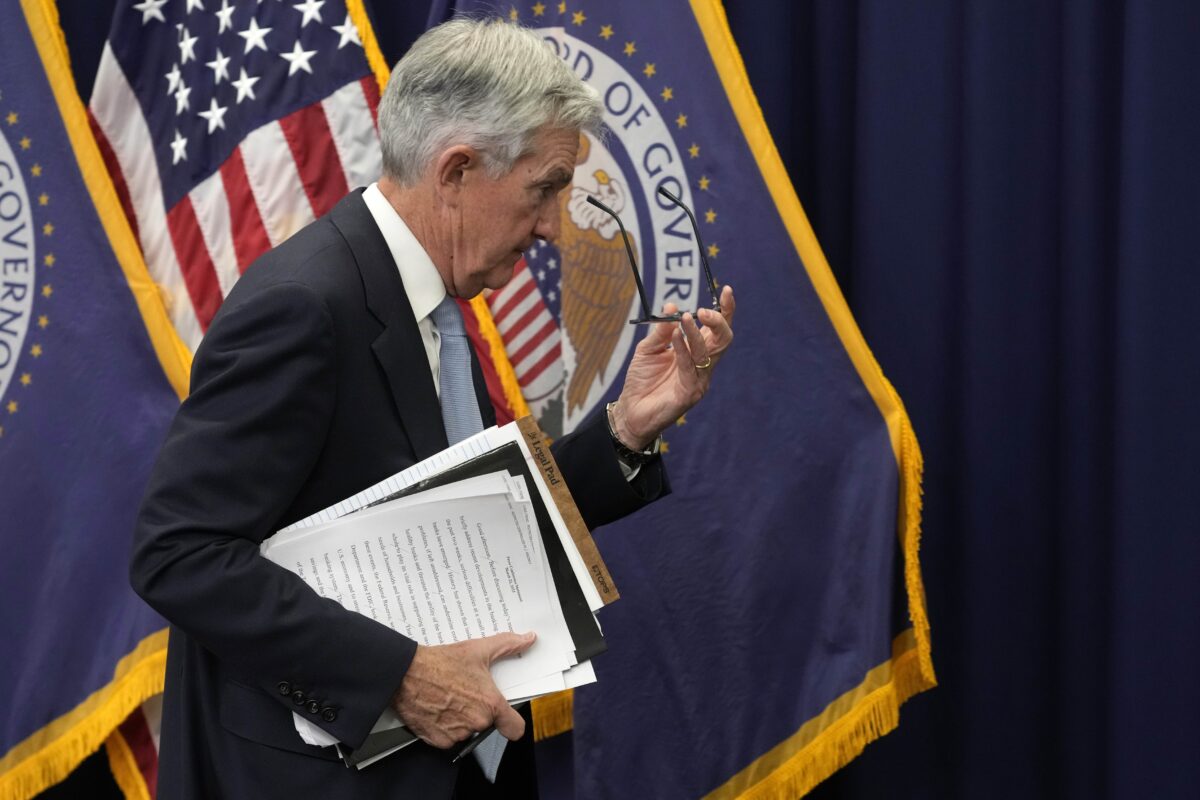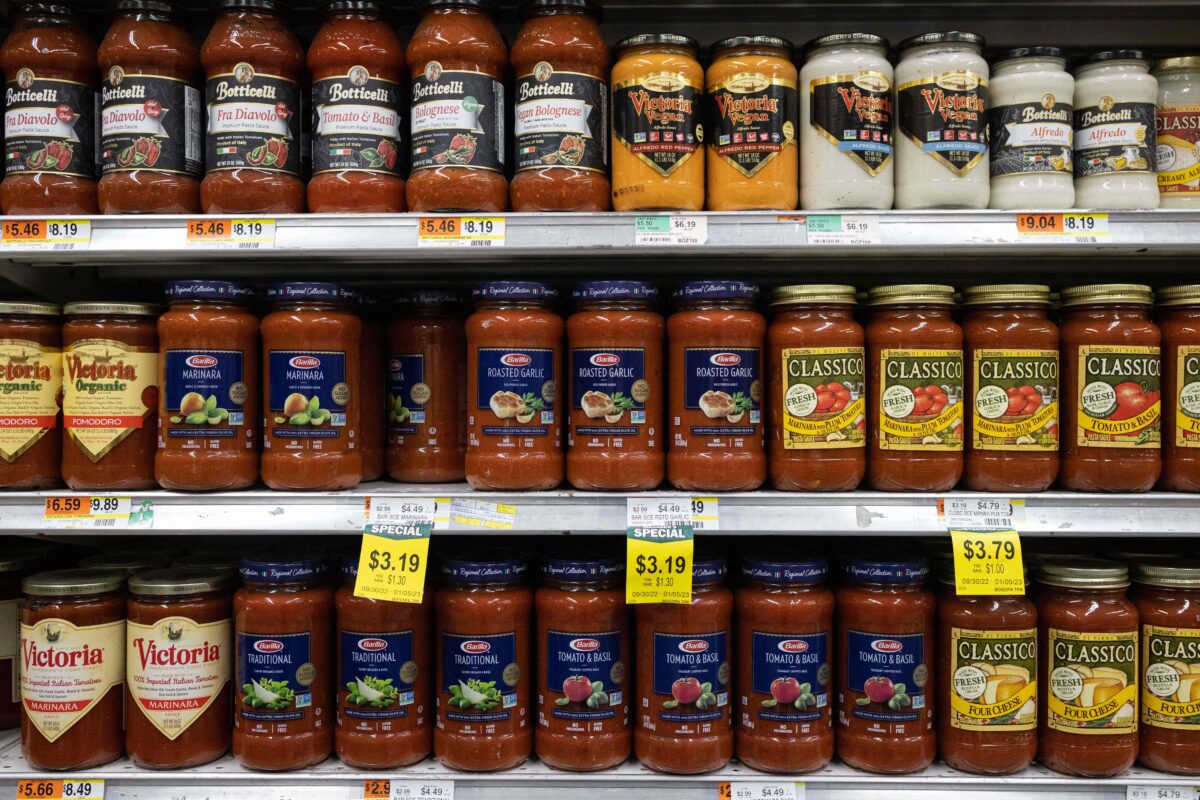All eyes this week will be on the April inflation report. Will it continue its downward trend, or will the consumer price index (CPI) continue to be stubborn and sticky?
The Federal Reserve Bank of Cleveland’s Inflation Nowcasting is penciling in an annual inflation rate of 5.2 percent, which would be up from 5 percent in March. The core inflation rate, which strips the volatile food and energy components, is expected to rise back to 5.6 percent.
On a month-over-month basis, the CPI and core CPI are projected to increase by 0.6 percent and 0.5 percent, respectively.
Consensus estimates are slightly lower, with the year-over-year inflation expected to remain unchanged at 5 percent.
“While down from that nosebleed territory, the annual increase for April is still expected to come in around 5 percent,” said Mark Hamrick, the senior economist analyst at Bankrate.
If the projections are accurate, this would be the first time that the U.S. inflation rate did not tumble since hitting a peak of 9.1 percent in June 2022.
President Joe Biden recently touted the steady decline in inflation at a meeting with the White House Investing in America Cabinet.
“Inflation is now down 40 percent since last summer, it’s come down in the last nine months in a row,” Biden said on May 8. “We obviously have more work to do, but we’re trending in the right direction, and I think we’re making real progress.”
What will market observers be paying attention to heading into the May 10 CPI data?
What Is Adding to Inflation Pressures?
RBC Economics economists purport the biggest contributor to the CPI may have been higher energy prices, as gasoline prices climbed 3 percent last month. In addition, average West Texas Intermediate (WTI) spot crude oil prices also surged 8.4 percent. As a result, bank economists think the energy index will jump slightly from negative 6.4 percent in March to negative 4.5 percent year-over-year in April.
Hamrick agrees, although he thinks the latest drop could be good news for the May CPI.
“On the month-over-month CPI measures, the consensus among economists calls for gains of 0.4 percent for the headline gauge after a pop in gas prices in April. Moving past the immediate snapshot, the good news for May (the following month’s report) is the recent downward pressure on oil and gasoline prices.”
Food inflation is predicted to ease slightly but could remain elevated at 8 percent, down from 8.5 percent in March, RBC economists noted.
Last week, the United Nations’ Food and Agriculture Organization’s (FAO) price index rose in April for the first time in a year, reflecting an increase in higher meat, rice, and sugar prices. The international food market is facing a plethora of challenges, such as skyrocketing orange prices, a global rice deficit, and sugar prices at their highest levels in more than a decade.
Another issue on the inflation front is services, which include everything from banking to auto repair to medical care. In March, services inflation came in at 7.3 percent, the lowest in four months.
The Institute for Supply Management’s Purchasing Managers’ Index (PMI)—a general trend of the direction of the sector—showed that prices rose a bit in April.
“The majority of respondents are mostly positive about business conditions; however, some respondents are wary of potential headwinds associated with inflation and an economic slowdown,” said Anthony Nieves, the chair of the ISM’s Services Business Survey Committee, in the report.
To determine the future trajectory of services inflation, BlackRock economists prefer to monitor regulated service prices, like insurance, and services with infrequent price resets, including medical services and subscriptions.
“We see upside risks in both of these areas, which contribute to our view that core inflation is likely to remain sufficiently elevated throughout 2023 that monetary policy has no space to loosen in the second half of this year,” wrote Tom Becker, a portfolio manager at BlackRock, in a recent note.
What About Monetary Policy?
The April inflation report could have significant implications for monetary policy.
“Inflation is still a concern for Federal Reserve officials, and U.S. price pressures, while easing, have been sticky,” RBC said in a report.

Despite slowing inflation growth across the U.S. economy, Fed Chair Jerome Powell said at the May post-Federal Open Market Committee (FOMC) policy meeting press conference that “inflation pressures continue to run high and the process of getting inflation back down to 2 percent has a long way to go.”
At the same time, Powell is optimistic that inflation will continue to come down as the “goods pipelines have gotten back to normal so that we don’t have long waits and shortages and that kind of thing.”
For now, the futures market is widely forecasting a rate pause at the June FOMC meeting, according to the CME FedWatch Tool.
Jeremy Siegel, a professor of finance at the Wharton School, told CNBC that “the bar is extremely high for another rate hike.”
“CPI has to be much hotter than expected, and we need a hot employment report for May. If that happens, another quarter point may be on the table,” he said.
St. Louis Fed Bank President James Bullard warned at a conference on monetary policy at Stanford University’s Hoover Institution on May 5 that interest rates might need to “grind higher” because he expects the progress on inflation to slow.
James Knightley, the chief international economist at ING, believes inflation will slow throughout the rest of the year, allowing the U.S. central bank to cut interest rates by the end of 2023.
“CPI is still running well above the 2% target, but we do at least expect the annual to slow to 4.9%, having peaked at close to 10%,” he wrote in a note.
“Keeping in mind that the Federal Reserve has a dual target of 2% inflation and maximum employment, we expect to see recessionary forces push inflation close to target by year-end, with unemployment rising. We think this could result in 50bp interest rate cuts at both the November and the December FOMC meetings.”
The next two-day FOMC policy meeting will be June 13 and 14.
Meanwhile, inflation expectations continue to be anchored in the U.S. economy. The Fed Bank of New York’s Survey of Consumer Expectations (SCE) found that the median expectation for the annual inflation rate will be 4.4 percent one year from now, down from 4.7 percent in March. Three- and five-year-ahead inflation projections came in at 2.9 and 2.6 percent, respectively.

















































